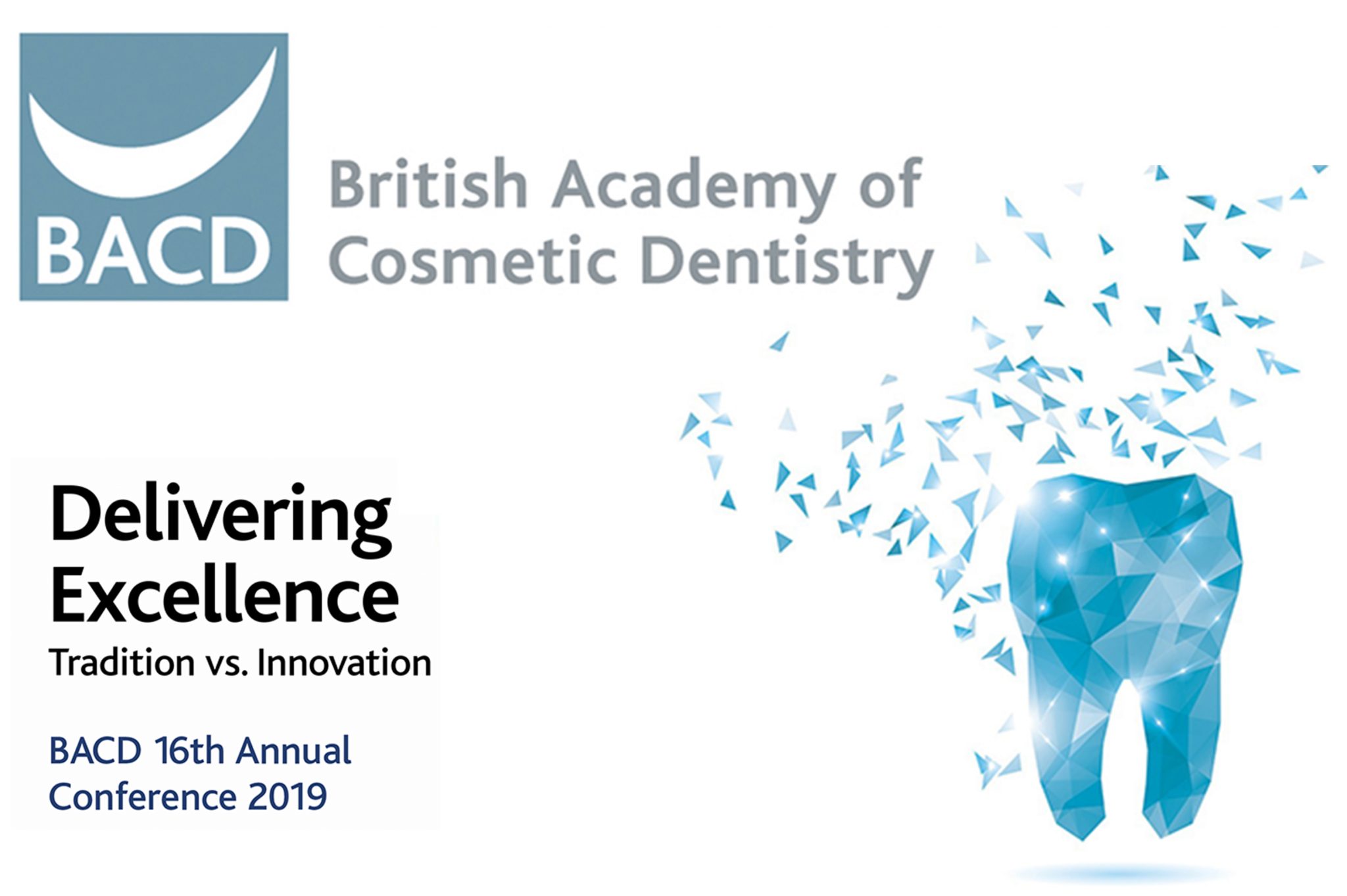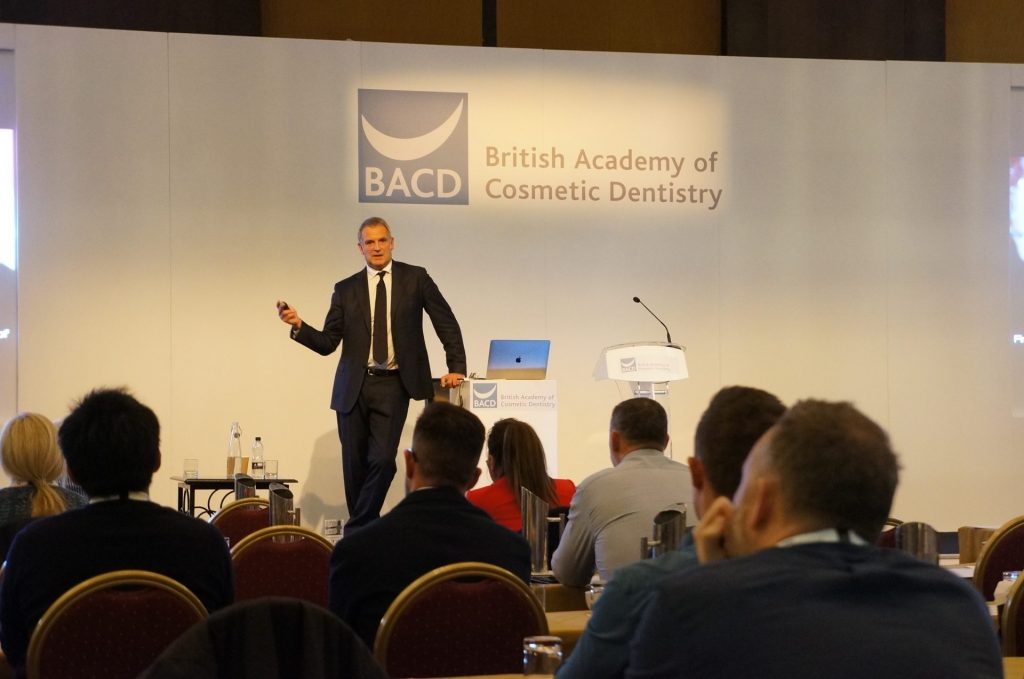Planning and prosthetics are everything in cosmetic dentistry
Featured Products Promotional FeaturesPosted by: Dental Design 1st February 2020

In all fields of dentistry, achieving good aesthetic outcomes is crucial. While patients will come to appreciate the benefits of function and longevity following treatment, they will often initially be most concerned with the appearance of their smile. As such, finding new ways to predictably and reliably deliver in this area is important for all dentists in the modern profession.
The celebrated BACD considered this topic of dental aesthetics at its recent sold-out Annual Conference in November 2019. Members and non-members alike came together to develop their knowledge and skills and compare traditional with new techniques. They had the opportunity to hear from internationally leading speakers in the area, with a wealth of practical advice and inspirational ideas brought to the fore. Throughout the programme, the theme of “Delivering Excellence: Tradition vs. Innovation” truly came alive.
Among the sessions to draw a crowd was Dr Eric van Dooren’s presentation on “New opportunities in the aesthetic zone”. Focusing on the rehabilitation of patients with aesthetically and functionally compromised dentition, he explored how clinicians can utilise analogue and digital concepts and techniques to achieve outstanding results in implant dentistry.
Early on in his lecture, Dr van Dooren highlighted the importance of individuals working with the right technologies for them. While the full digital workflow wasn’t his preference, he did show how he utilised some digital solutions to take advantage of the benefits available. This is especially relevant for the treatment planning phase, where 3D imaging and software allows accurate virtual positioning of implants for both the dentist and dental technician to work from. He also emphasised the need for a CBCT scan where there is limited bone. As in all cases, planning and documentation are key for complex implant treatments.
 Dr van Dooren went on to share an array of his own cases, humbly pointing out where treatment could have been improved. “I learn from failing cases,” he commented, encouraging everyone to learn from their own mistakes. Dr van Dooren discussed the longevity of implants and crowns, which are “not eternal” solutions, and how prosthetic materials contribute to their lifespan. He showed a case where excessive cutting back of the soft tissue and lack of maintenance resulted in gingival recession and a compromised aesthetic outcome in the long-term.
Dr van Dooren went on to share an array of his own cases, humbly pointing out where treatment could have been improved. “I learn from failing cases,” he commented, encouraging everyone to learn from their own mistakes. Dr van Dooren discussed the longevity of implants and crowns, which are “not eternal” solutions, and how prosthetic materials contribute to their lifespan. He showed a case where excessive cutting back of the soft tissue and lack of maintenance resulted in gingival recession and a compromised aesthetic outcome in the long-term.
Next, the learning curve involved when transitioning from analogue to digital methods was demonstrated, though it was made clear that guided surgery makes implant placement simpler and more precise, when used correctly. With a word on immediate, early and delayed implant placement, Dr van Dooren urged clinicians to prepare for their chosen technique in the treatment plan and to ensure they have the necessary training and skill to deliver it. As he put it, “you need to know the limitations of your hands and your brain”.
Moving onto prosthetic design, it was evident that the speaker found digital technologies to improve this area of his dentistry. Dr van Dooren shared his preference for screw-retained implant restorations, which should be palatally positioned for optimal aesthetics. He discussed his processes in different cases, demonstrating how the prosthesis design dictates the soft tissue aesthetics as much as the restoration itself. He was also passionate about the importance of getting this stage of treatment right, saying “surgery is one thing, but you can mess up the case with a poor prosthesis”.
Offering final food for thought, Dr van Dooren reaffirmed his continued inclination towards analogue methods. He suggested that the cost of current technologies may still be a barrier for many clinicians, although this may change as equipment evolves and prices reduce.
Aside from Dr van Dooren’s lecture, the BACD Sixteenth Annual Conference offered a myriad of learning opportunities for delegates to enjoy. Delegate feedback has been exceptional. Dr Gregor Škorjanc said:
“The lectures were really interesting – you see different approaches on how to solve difficult cases. The speakers showed the mistakes they make, not just their brilliance. It was also a lot about treatment planning, which is the most difficult aspect of our work. The BACD Annual Conference is about getting the bigger picture in your day-to-day workflow.”
Dr Jurgita Sybaite added: “Everything has been well planned and well executed. I enjoyed Eric’s and Mauro’s lectures – they were brilliant!”
The conference dedicated a day to hands-on sessions on the Thursday, which proved to be sell-out events. These covered a range of topics and ensured a rich and dynamic learning experience for all delegates in attendance.
“The hands-on workshops were inspiring, especially for someone who’s at the beginning of their career,” commented Dr Dominique Napier. “The BACD is incredibly inclusive and there is a wealth of experience shared by speakers and delegates at the Annual Conference. I would recommend the event to anyone at any stage of their dental journey.”
For further enquiries about the British Academy of Cosmetic Dentistry, visit www.bacd.com










